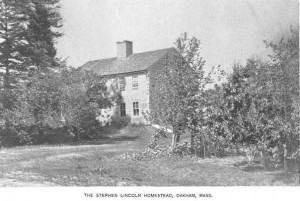According to John Emory Morris’ Stephen Lincoln of Oakham, Massachusetts, His Ancestors and Descendants (1895), Stephen Lincoln first built a home in Oakham, Worcester County, Massachusetts, in 1784. As late as 1895, this house stood on the road leading from Rutland to Barre Plains, near the home of his father-in-law, Lieutenant Ebenezer Foster. In theory, locating the Lincoln house – or, rather, where it once stood – should be fairly straight forward, right? Continue reading “Beginning at a stake and stones…”
Tag Archives: Object Lessons
Excerpts from Martha Anne Kuhn’s diary, 1836
 Martha Anne (Kuhn) Clarke kept a diary in 1836, while a student at the Temple School in Boston. The series of excerpts began here and continued here and here. In this installment she writes about the conclusion of a journey around New England. Continue reading Excerpts from Martha Anne Kuhn’s diary, 1836
Martha Anne (Kuhn) Clarke kept a diary in 1836, while a student at the Temple School in Boston. The series of excerpts began here and continued here and here. In this installment she writes about the conclusion of a journey around New England. Continue reading Excerpts from Martha Anne Kuhn’s diary, 1836
A brief history of New Hampshire vital records
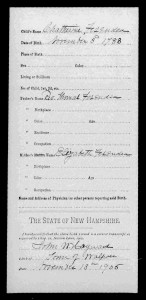 I was recently asked about the apparent disappearance of the eighteenth- and nineteenth-century vital records of Walpole, New Hampshire. The originals survived into the early twentieth century, but they are no longer to be found in the town clerk’s office in Walpole.
I was recently asked about the apparent disappearance of the eighteenth- and nineteenth-century vital records of Walpole, New Hampshire. The originals survived into the early twentieth century, but they are no longer to be found in the town clerk’s office in Walpole.
I did some digging. In New Hampshire, vital records for each town are located at the town level. Therefore, the original vital records books for Walpole should be housed with the town clerk. However, when I called the town clerk, she stated that the records currently in the town’s collection start in the 1850s. According to the clerk, the early town records were burned in a fire. She did, however, suggest that I call the Division of Vital Records Administration, New Hampshire Department of State, in Concord to learn more about the practices of preserving vital records in early New Hampshire. Continue reading A brief history of New Hampshire vital records
Excerpts from Martha Anne Kuhn’s diary, 1836
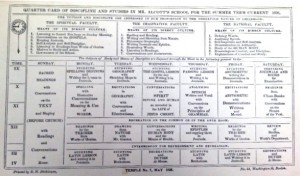
Martha Anne (Kuhn) Clarke kept a diary in 1836, while a student at the Temple School in Boston. The series of excerpts began here and continued here. In this installment she writes of her journey through western Massachusetts and into New York. Continue reading Excerpts from Martha Anne Kuhn’s diary, 1836
Notes on a Wolf family reunion
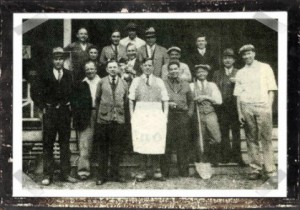
I arrived last fall at the New England Historic Genealogical Society as a neophyte in family research and I still consider myself one. My position as NEHGS Publications Coordinator, however, has given me some insight into which publications are go-to resources for genealogists and family researchers, and I’m now familiar with translating findings into Register style and the ahnentafel format. I’ve also heard many interesting stories related to unexpected findings and brick wall breakthroughs, particularly when talking with participants in our Writing & Publishing Seminar this past May. Continue reading Notes on a Wolf family reunion
World wide Italian immigration

When we think about Italian immigration here at NEHGS, it is often because the patron we are helping is looking for ancestors who arrived here in the late 1800s or early 1900s. However, Italians immigrated to many different countries, including other European countries as well as countries in South America and other continents such as Australia. Continue reading World wide Italian immigration
Calculating age at death – and why

Instead of identifying a person’s date of birth, death certificates and gravestones sometimes identify the deceased person’s age in years, months, and days. But what is the purpose of giving an exact age rather than a birth date, and how is this age determined? Are there any consistent rules for this process?
In Colonial America it was traditional practice to inscribe a tombstone with the deceased’s age in years, months, and days. For example, the cemetery marker for Griffith Thomas was inscribed with the following: “In Memory of Griffith Thomas who departed this life October 25th 1800 Aged 58 years, 9 months and 10 days.” Continue reading Calculating age at death – and why
Family centenarians
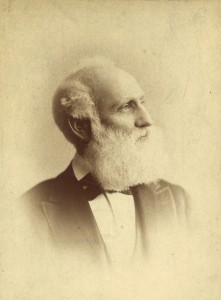
From time to time I undertake some light housekeeping on my genealogical notes, and lately I have focused on collecting stray family names and dates. My flirtation with Google continues, since an organized approach to entire family groups has yielded great dividends. I’ve also spent time on Ancestry.com exploring the (often unsourced) family trees, ones kept by my distant cousins or their cousins, which can provide clues about what became of an uncle’s widow once she remarried and moved beyond the ken of the record-keepers on my side of the family. Continue reading Family centenarians
The Horace Augustus Knowles Papers
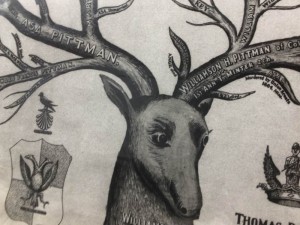 The “Manuscripts@NEHGS” column in the Spring 2014 issue of American Ancestors contains extracts from each of the three collections processed by interns for the R. Stanton Avery Special Collections during the Fall of 2013. The collections were the Burnham Family Papers (Mss 1120), Charles Harold Floyd Family Papers (Mss 1118), and the Walker Family Papers (Mss 1119). While interns were working on these collections, the Special Collections staff began processing a fourth collection, the Horace Augustus Knowles Papers. This collection also contains interesting personal accounts, similar to those highlighted in the magazine article. Continue reading The Horace Augustus Knowles Papers
The “Manuscripts@NEHGS” column in the Spring 2014 issue of American Ancestors contains extracts from each of the three collections processed by interns for the R. Stanton Avery Special Collections during the Fall of 2013. The collections were the Burnham Family Papers (Mss 1120), Charles Harold Floyd Family Papers (Mss 1118), and the Walker Family Papers (Mss 1119). While interns were working on these collections, the Special Collections staff began processing a fourth collection, the Horace Augustus Knowles Papers. This collection also contains interesting personal accounts, similar to those highlighted in the magazine article. Continue reading The Horace Augustus Knowles Papers
Excerpts from Martha Anne Kuhn’s diary, 1836
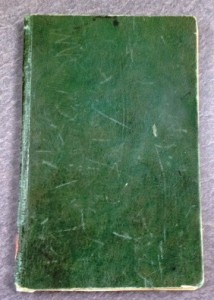
“Christmas won’t be Christmas without any presents,” grumbled Jo, lying on the rug.
“It’s so dreadful to be poor!” sighed Meg, looking down at her old dress.
“I don’t think it’s fair for some girls to have plenty of pretty things, and other girls nothing at all,” added little Amy, with an injured sniff.
“We’ve got Father and Mother, and each other,” said Beth contentedly from her corner.
So begins Louisa May Alcott’s novel, Little Women, whose opening lines have always stuck in many readers’ minds, including my own. When reading Little Women as a young man, I was unaware that I would one day find a manuscript that mentions her controversial father, Bronson Alcott, who was a teacher, philosopher, and creator of the Temple School in Boston, Massachusetts, in the early nineteenth century. Continue reading Excerpts from Martha Anne Kuhn’s diary, 1836
